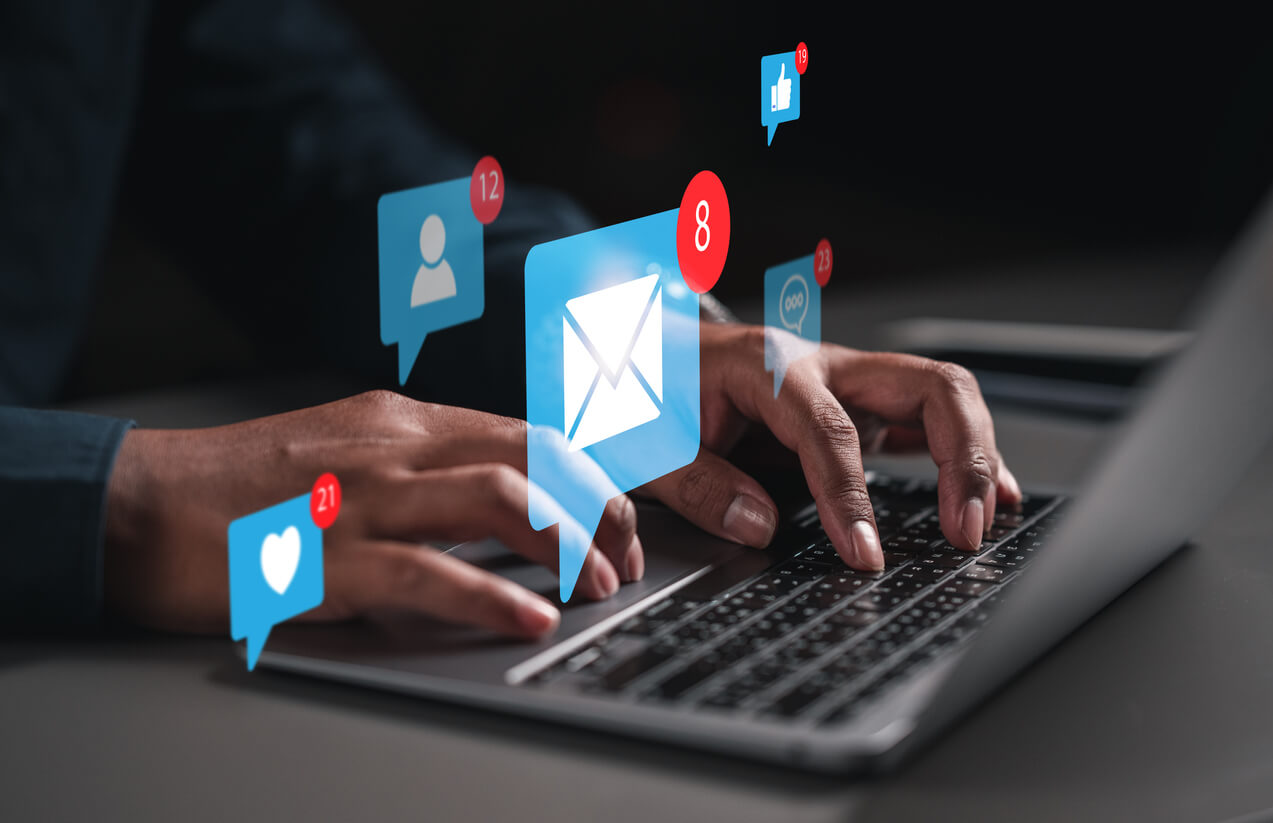Companies today can’t afford to lose their customer base and repeat business. While focusing on new customer acquisition should always be a goal, it can cost 7 times more to gain a new customer than to retain a current one. Brands that excel at winning repeat business get 76% of their revenue from repeat customers (RJ Metrics).
It’s easier to sell to your existing customers than it is to sell to new customers. In the RJ Metrics study based on B2C e-commerce, there’s a 32% chance your first-time customers will order a second time. If you get them to order a second time, the numbers go up even higher – they are 53% more likely to place a third order.
However, the inevitable attrition occurs for the majority of brands. A marketer typically has a list of customers, with as many as 25-50% of these people classified as “inactive”. Though consumers may not formally opt out, a significant number of formerly active buyers simply stop engaging with the brand’s email communications and are removed from the CRM programs altogether.
Ultimately, these inactive records become an impediment to strong engagement metrics, adversely impacting deliverability and prompting companies to cease marketing to these customers, thereby eliminating all future revenue potential.
Given that numerous studies demonstrate that opt-in consumers are more profitable than those who cannot be communicated with via email, marketers cannot afford to ignore unengaged buyers. These inactive buyers no longer need to sit dormant, there is an option to reactivate these opt-in consumers and drive additional revenue.
By every measure, reactivation pays tremendous dividends when well executed, demonstrating that successful brands must view reactivation as an ongoing strategic tool rather than a one-and-done activity.
Email for Reactivation
When it comes to both customer acquisition and retention, email ranks higher than any other strategy according to Target Marketing’s Media Usage Survey.
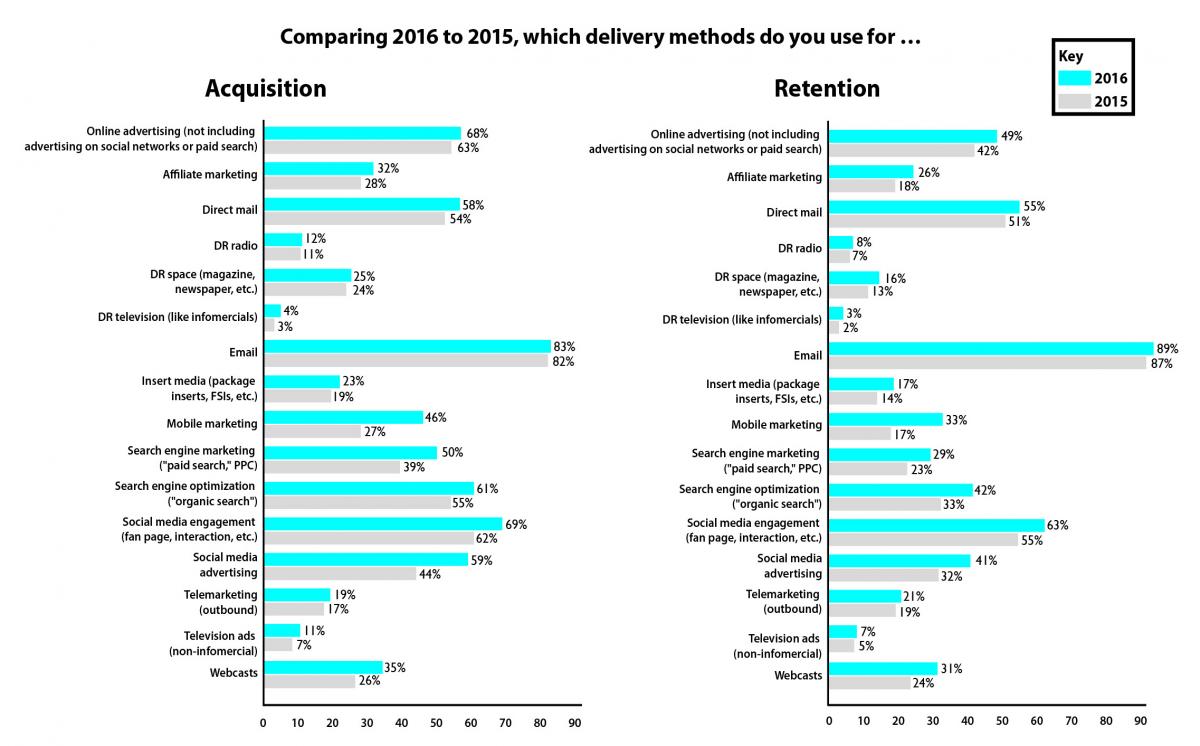
According to eMarketer, email is also cited as the most effective digital marketing channel for customer retention in the U.S., while also serving as the foundation of the marketing-to-sales funnel for the majority of B2B and B2C marketers.
When using email for reactivation, a multi-faceted approach should be implemented to address the challenge of inactive email records. Here are key elements central to the success of every CRM reactivation program:
Data Hygiene and Enhancement
Customer data decays at an alarming rate. Data decays at an average rate of 2 percent per month, which means you can expect 25 to 30 percent of your organization’s contact data to go bad each year under normal circumstances. People move, businesses change, people get new jobs, email conventions change, and the list goes on.
If you have inactive customer records sitting in your database, you will need to verify the deliverability of your emails. A data enhancement service can verify which emails are bad, append new emails to files, identify addresses known to be associated with spam traps, and even add additional demographical elements to your records to improve segmentation techniques.
Types of Email Messaging for Reactivation
Marketers can use many different tactics to reengage inactive customers. Once your email data is in tip-top shape, the next step is to segment your email subscribers based on criteria such as clickers who have not purchased within a certain time frame, non-openers, or openers who have not clicked or purchased within a certain time frame.
According to research by Experian, sending inactive customers an enticing offer is a strategy employed by many brands that have seen a lot of success. In Experian’s study of 44 clients sending reactivation campaigns, those including an offer in the subject line boosted engagement rates for almost all campaigns. For example, 13 of the top-25 subject lines with the highest transaction rates included ‘we miss you’, while only two of the bottom 25 included those words.
Research from Return Path also showed that using the words “miss you” in a subject line achieved a 13 % read rate, and messages with the words “come back” in their subject lines achieved a 12.7 % read rate.
Once a customer decides to open your email, the content needs to be enticing. Take a look at some of these examples to inspire your own win-back email offers.
Contact us to learn more about our email marketing solutions!
Basil Tree
The cafe Basil Tree sends a ‘we miss you’ email with an exclusive $25 off deal to re-engage their subscribers.
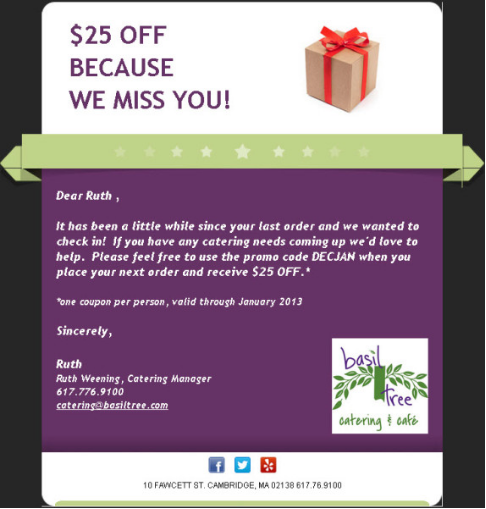
PinkBerry
Pinkberry is another great example of a brand offering something free to get their customers to re-engage.
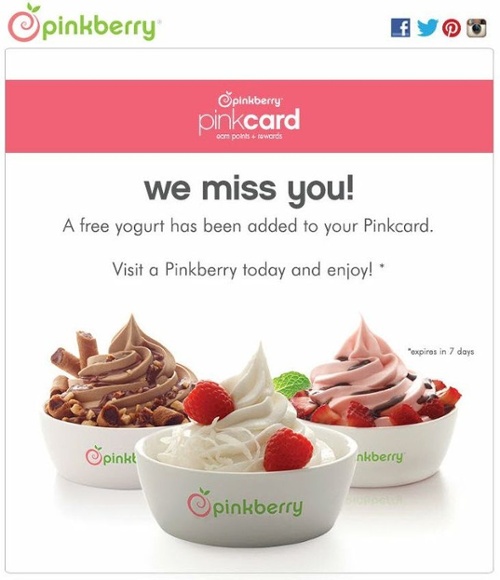
Office
Many times a subscriber will lose interest because you aren’t sending them relevant content. In fact, 56% of people unsubscribe from emails due to content that’s no longer relevant to them (Chadwick Martin Bailey). This example is a simple yet effective way to get to know your subscribers better by asking for their demographic information (like gender) and email preferences.
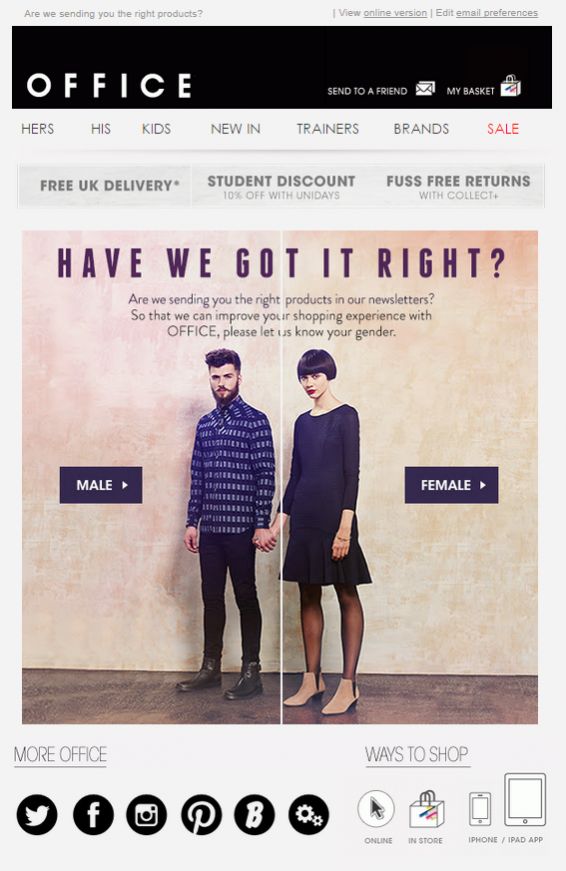
Jet Blue
A great way to win back dormant subscribers is to remind them why they subscribed in the first place. JetBlue gives their subscribers an option to keep their email preferences the same, change their preferences, or unsubscribe entirely.

Test Your Efforts and Don’t Give Up
According to a study by Return Path, the average length of time between when people received a win-back email and when they read a subsequent message was almost 2 months (57 days). 75% of subscribers clicked on a subsequent message within 89 days. Just because someone doesn’t respond to your win-back campaigns at first, don’t give up.
Likewise, just because a subscriber doesn’t read your win-back campaign, doesn’t mean that they won’t read future messages. The study found that even though subscribers may not have read a brand’s win-back campaign, 45% of subscribers read subsequent messages.
The key takeaway here is to be patient, test your email campaigns, a remember that while there is no magic formula –the efforts can pay off hugely in the long run.
Because reactivation campaigns build upon prior marketing investments to re-engage buyers with some level of brand familiarity, they can deliver significant incremental revenue gains. A secondary benefit is an increase in these buyers’ receptivity to future campaigns.
By every measure, reactivation pays tremendous dividends when well executed, demonstrating that successful brands must view reactivation as an ongoing strategic tool rather than a one-and-done activity.
Learn how Porch Group Media can help you get to know your customers better and reach them across channels to boost your marketing success. Contact us to get started!


